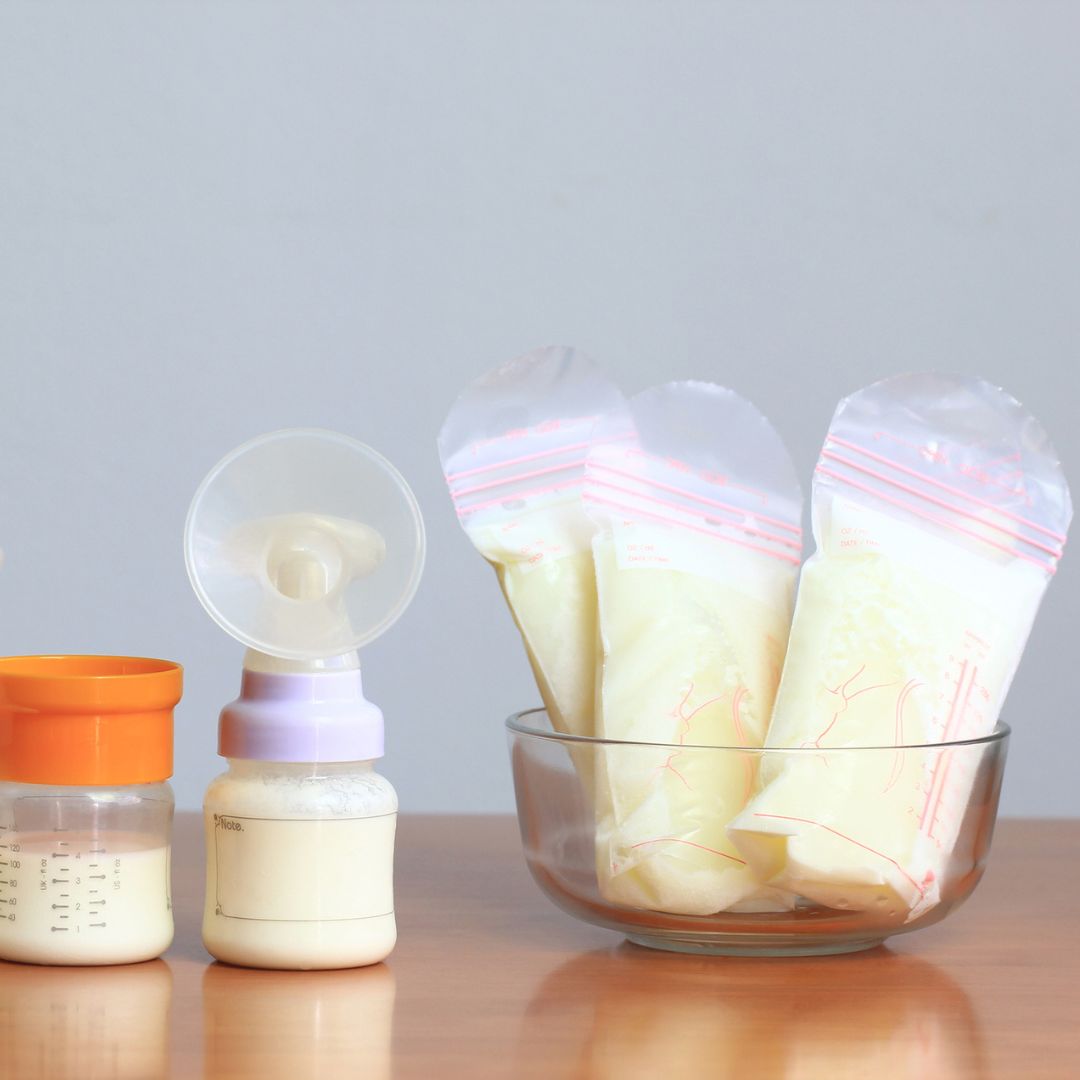The Truth About Colostrum Milk

Dispelling the myths
Many women start harvesting their colostrum in the late stages of their pregnancy, but soon find that they can’t produce much or anything at all, and then worry that their future milk supply will be low. However, this really isn’t the case. Let’s take a look at why you might be struggling to harvest your colostrum, and how this shouldn’t be taken as an indication of your feeding journey to come.
Colostrum harvesting – what’s all the fuss about?
Colostrum is the first milk your breasts produce. It’s a thick, yellowish fluid that is rich in essential nutrients, antibodies, and immune-boosting goodness for your little one.
It’s often referred to as ‘liquid gold’ due to its invaluable role in protecting and
nourishing your newborn. You will have been producing colostrum since the 12-16
week stage of your pregnancy, so it’s actually been in your breasts all along. But it
starts to be made in much higher quantities after you have given birth.
Colostrum harvesting is the process of hand-expressing small drops of colostrum
from your breasts, which are then stored in special syringes. These syringes can be
brought with you to your hospital or birth location, and can be given to your baby if
they aren’t able to breastfeed straight away for any reason.
Understanding breastfeeding
No matter how you want to feed your baby, your body will produce breastmilk, and
the way this works is nothing short of incredible. Lactation – otherwise known as
breastfeeding - relies on your brain producing hormones in order to work.
First up, we have prolactin, also known as the mothering hormone. This is the
hormone that orders the milk. Think of it as the customer at the bar. Prolactin is
triggered when the placenta comes away from your uterine wall to be birthed. Early
skin contact with your baby is essential to generate large amounts of prolactin and
activate maximum milk production. And suckling prompts it, too. As soon as your
baby suckles, or you hand express, or use a breast pump - your brain gets the
message that milk is needed, and it puts the order in. Your baby suckling is the best
way to produce the maximum amount of breastmilk.
Next, we have oxytocin, known as the love hormone. This is the hormone that
delivers the milk. Think of it as the bartender. Oxytocin is triggered by your baby
suckling. It comes from your brain - once your brain has put the milk order in,
oxytocin quickly follows to deliver the milk.
So why can prenatal colostrum harvesting be difficult?
Your hormone levels shift significantly as your body experiences birth. You go from
having high levels of oestrogen and progesterone during pregnancy to having high
levels of prolactin and oxytocin after birth, and these, as we have learned, are the
hormones necessary for breastfeeding.
If you’ve tried to hand express colostrum while pregnant, then you’ll know it can be a struggle. You might be left disappointed when you’re only able to produce small
amounts of colostrum, or perhaps none at all, and then end up panicking that you’ll
have no milk to feed your baby. But it’s important to remember that at this stage, you won’t have the right levels of lactation hormones in place until after birth.
Any colostrum you happen to harvest while you’re still pregnant is simply a bonus! Don’t beat yourself up if it’s a really slow process - perseverance and removing yourself ffrom the pressure of expectation is key. And if it’s just not happening for you at all, then don’t despair. You WILL be able to feed your baby when you’ve given birth.
Only a very small portion of the population actually have low milk supply, and this is
usually down to factors such as insufficient glandular tissue or a history of breast
surgery. The vast majority of us (approximately 95%) do produce enough milk to
feed our babies.
If you remember one bit of information from this guide, then let it be this: antenatal
hand-expressing is no indication of your future milk supply. Building a strong,
consistent milk supply when you start breastfeeding is really about feeding against
your baby’s hunger cues.
Giving it a go
Now that you’re aware of the facts, if you do want to try harvesting colostrum milk
while you’re pregnant, you can do so confidently while anticipating success with a
pinch of salt. You can buy colostrum syringes on Amazon in a pack of 10, which is all you’ll need.
Start with one session of hand-expressing per day, and then slowly build up to a
routine you’re comfortable with. You may find the process strange at first, so it’s
important to check in with yourself regularly and ensure you’re comfortable.
Perhaps pop something on TV to watch while you’re doing it, and be sure to take your time. Make a cup of tea - it can also help and we always recommend Milk's Up Breastfeeding Tea as a soothing cup of tea that can link to increasing prolactin levels and milk supply.
Colostrum comes in tiny quantities, so don’t be surprised by how little you produce.
The most important thing is to slowly and comfortably build up the technique of
expressing milk from your breasts – trust me, it’s an invaluable skill to learn for when you’re postnatal.
And remember, it’s perfectly alright to seek professional support if you struggle with
feeding post-birth. There is no shame in reaching out for help.
Butterbean - Award Winning Hypnobirthing and Antenatal Courses
This blog was created by Lucy, antenatal educator and birth expert, and founder ofbutterbean. Winner of the Loved by Parents award 2023 for best innovative
maternity product. Butterbean is a trusted hub of empowering resources for new and expecting parents. Providing holistic care that’s tailored to your unique journey,
butterbean offers a comprehensive hypnobirthing course, a midwife-monitored helpline, personalised pregnancy yoga sessions, and detailed feeding guidance. It’s
inclusive of all journey stages and accessible on demand to suit your schedule. Put
simply, butterbean is Lucy’s gift to you - from one Mum to another. To take a closer
look, head to the butterbean website, or drop Lucy a follow on Instagram for regular
top-notch content on pregnancy, birth, and beyond. You can find out more by visiting our website: www.butterbean.uk
Tea to help breastfeeding
And if you're looking for a way to hydrate with added benefits for nursing and lactation - consider our Milk's Up breastfeeding tea. Packed full of natural herbal galactagogues which are linked to boosting prolactin levels and therefore increasing milk supply. With fenugreek, fennel, aniseed and nettle - it's a caffeine-free, milk supporting cuppa.




Comments